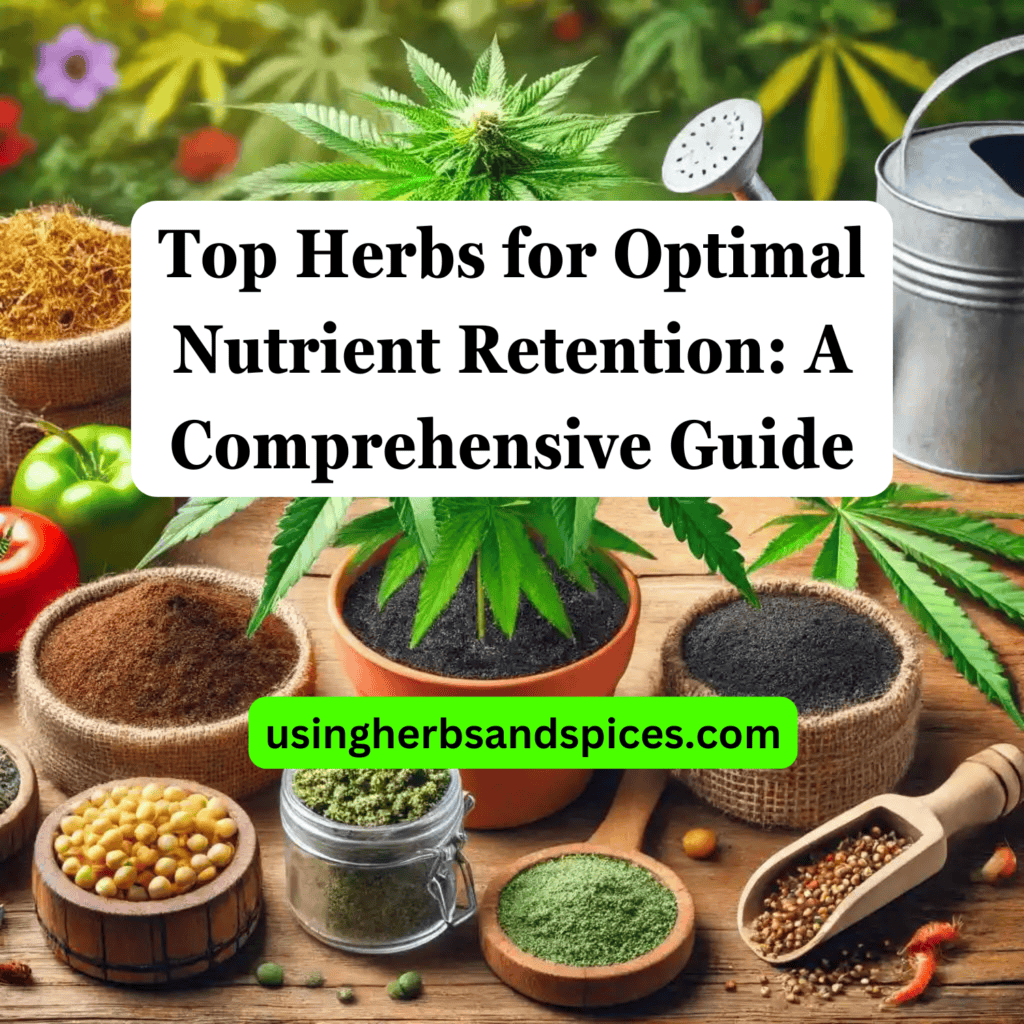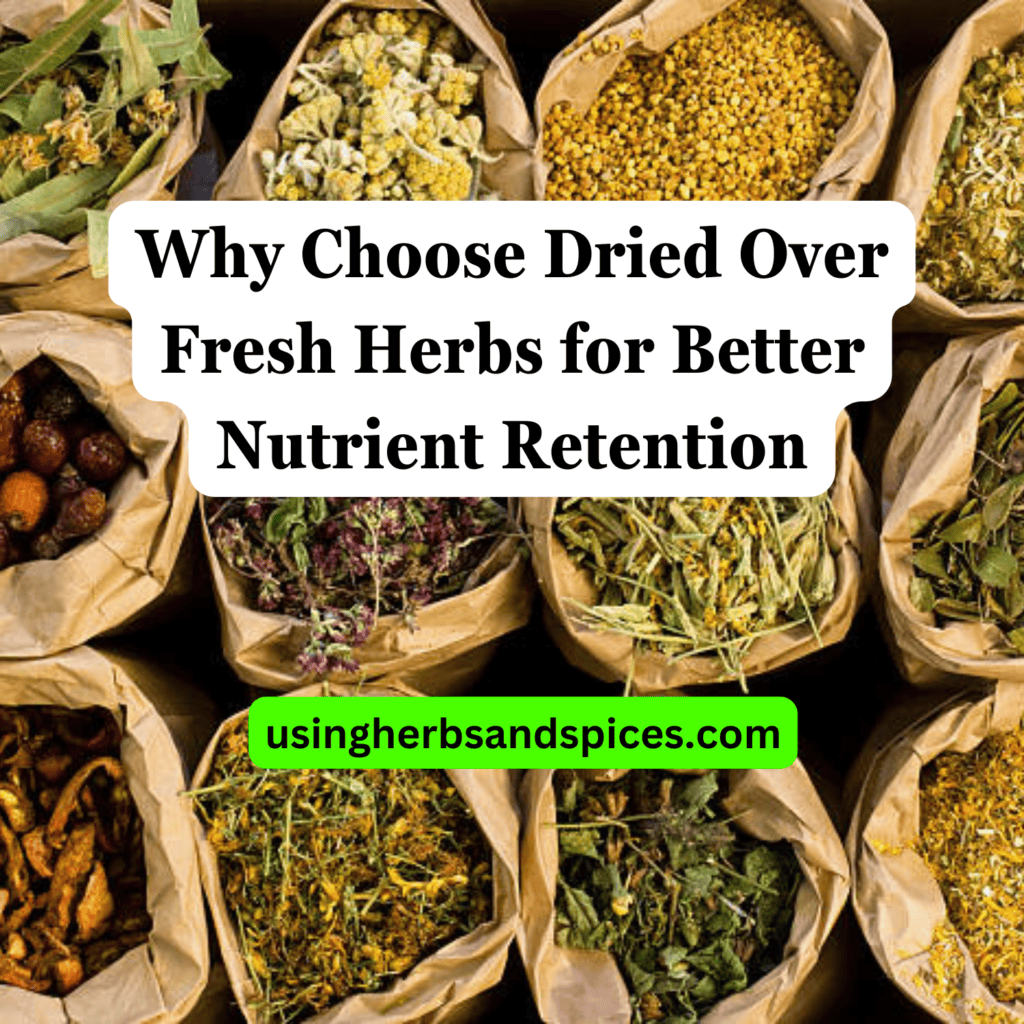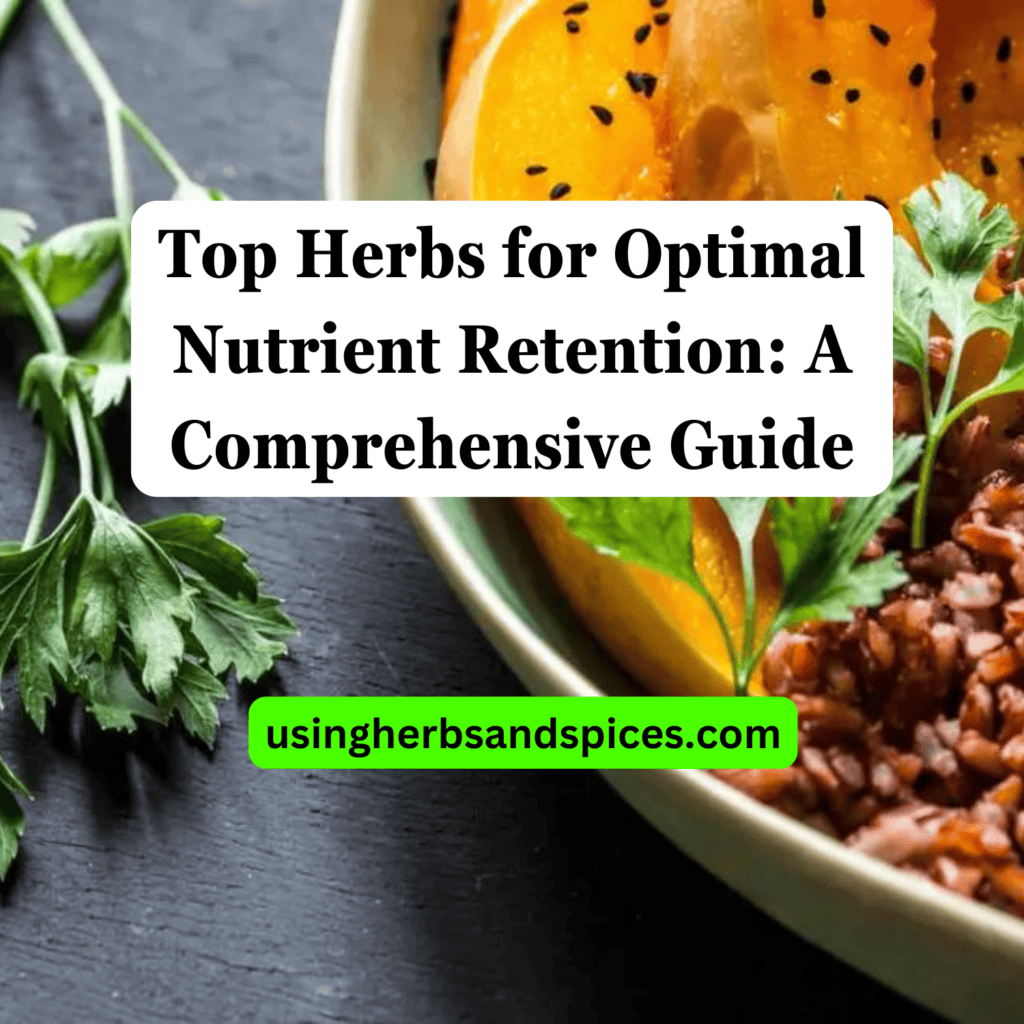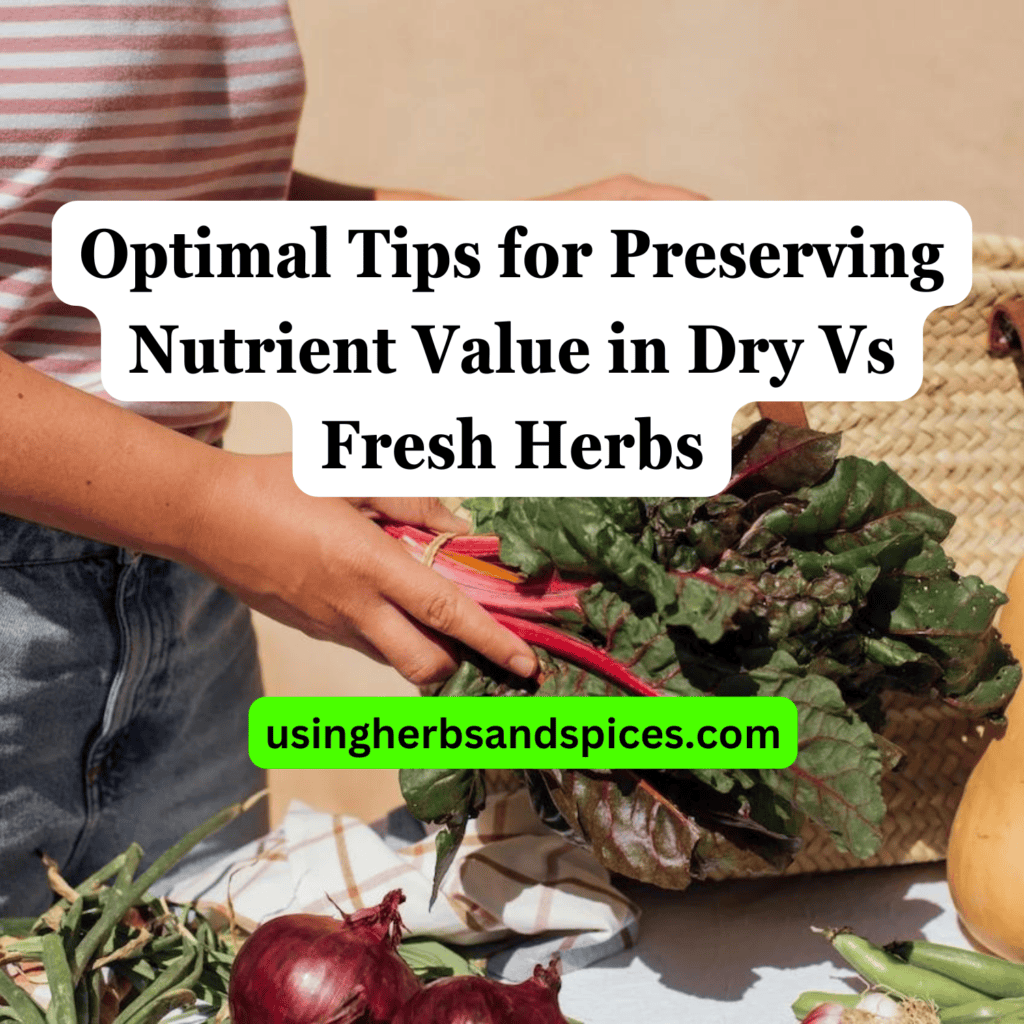SUMMARY: Dried herbs lose some nutrients during the drying process, but they still offer convenience for storage and use. Live plants maintain more of their nutritional integrity, providing a fresher option with greater health benefits.
Ever wondered why your kitchen herbs lose their punch after drying?

This article unpacks the truth behind nutrient loss in dried versus live plants.
- The drying process and its effects on plant quality
- Insights into nutrient depletion in dried herbs
- Comparative nutritional benefits of live plants
- Finding the balance: Dried convenience versus live vitality
Continue reading to understand how this knowledge can guide your choices between dried and live plants.
The Essence of Drying: How It Affects Plant Quality
At first glance, drying plants seems like a simple preservation method, but the reality is far more complex. This process, while extending the shelf life of herbs and other botanicals, can significantly impact their nutritional and medicinal value. When plants are dried, they are exposed to factors such as heat and air, which can degrade their essential oils and active compounds. These compounds are responsible for the flavors, aromas, and health benefits plants are known for. Consequently, the drying process can result in a diminished quality, where the dried product may not offer the same potency as its fresh counterpart.
Understanding the dynamics of how drying affects plant quality is crucial for anyone looking to maximize the therapeutic and culinary benefits of herbs. Whether air-dried, sun-dried, or dehydrated using modern technology, each method has its own set of variables that can alter the botanical’s integrity. From temperature fluctuations to exposure durations, these factors play a pivotal role in determining the final quality of dried plants.
In summary, while drying is an effective way to preserve plants, it is a double-edged sword. The process indeed allows for longer storage times and can make herbs more accessible year-round, but it also instigates a decline in their intrinsic value. As we dive deeper into the specifics of nutrient loss, it becomes evident why understanding the effects of drying is necessary for making informed decisions about dried versus live plants.
Nutrient Loss in Dried Herbs: A Closer Look
When herbs undergo the drying process, a significant transformation occurs. The method, whether it’s air-drying, oven-drying, or using a food dehydrator, impacts the level of nutrient retention in the herbs. A common misconception is that dried herbs are just as nutritionally rich as their fresh counterparts. However, research shows that drying can lead to a decrease in essential oils and vitamins, particularly water-soluble vitamins such as vitamin C and B-vitamins.
One study published in the Journal of Food Science analyzed the effects of various drying methods on the nutrient content of herbs. The findings revealed that while essential oil concentrations can be preserved to some degree, significant losses in vitamin C were observed across all drying methods when compared to fresh herbs. Furthermore, the rate at which these nutrients are lost can vary, with high-temperature drying methods accelerating the degradation process.
Nevertheless, it’s important to note that not all nutrients are equally affected. Minerals, for example, being more stable, tend to remain more intact through the drying process. Additionally, while some vitamins are diminished, dried herbs often offer a more concentrated source of flavors and, in some cases, beneficial compounds that can withstand the drying process.
Understanding the impact of nutrient loss during drying is crucial for individuals seeking to maximize the nutritional benefits of herbs in their diet. Whether incorporating herbs for their flavor, potential health benefits, or both, the knowledge of how drying affects nutrient content allows for more informed choices.
Live Plants: The Beacon of Nutritional Integrity
Live plants stand as unparalleled sources of nutritional integrity, providing a wealth of vitamins, minerals, and active compounds directly to consumers. Unlike their dried counterparts, live plants maintain their biochemical vibrancy, which is critical for optimizing health benefits. The presence of live enzymes, essential oils, and phytonutrients in fresh plants contribute significantly to their therapeutic properties. These elements are delicate and can be substantially diminished through the drying process.
Moreover, live plants offer an additional benefit of interacting with the environment in ways that enhance their nutritional profile. For example, photosynthesis in live plants continually replenishes their nutrient content, ensuring an optimal level of freshness and efficacy at the time of consumption. This process is halted once the plant is harvested and dried, leading to the gradual erosion of its nutritional value over time.
The importance of consuming live plants is also evident in the way our bodies assimilate nutrients. The natural moisture present in live plants aids in the digestion and absorption of vitamins and minerals, making them more bioavailable than those found in dried forms. As such, integrating live plants into one’s diet is a critical step towards harnessing the maximum health benefits they offer.
The Compromise: Balancing Convenience and Nutrient Preservation
Finding a balance between the convenience offered by dried plants and the nutritional superiority of live plants is essential for optimizing health benefits while accommodating lifestyle demands. The key lies in understanding when and how to use each form to its utmost advantage. For instance, dried herbs may serve as a practical choice for long-term storage and use in cooking, where their concentrated flavors can withstand the cooking process.</ bed.
On the other hand, incorporating live plants into daily diets, such as fresh herbs, leafy greens, and sprouts, ensures the intake of maximum nutritional benefits. These can be easily added to salads, smoothies, and garnishes to enhance the nutrient density of meals with minimal effort.
To mitigate nutrient loss in dried herbs, it’s crucial to adopt proper drying and storage methods. Drying herbs at lower temperatures can help preserve their essential oils and active compounds. Likewise, storing them in airtight containers away from direct light preserves their potency for longer periods. By strategically integrating both dried and live plants into one’s regimen, it’s possible to enjoy the best of both worlds — convenience and nutritional integrity.
The Verdict on Dried Vs Live Plants
In the exploration of dried versus live plants, several key insights help inform our choices in favor of our health and convenience.
-
- The drying process significantly alters the chemical composition of plants, often leading to nutrient depletion.
- Despite this, dried herbs offer a compromise between convenience and nutrient preservation, providing a practical alternative when live plants are not accessible.
- Live plants remain unparalleled in terms of nutritional integrity, offering the full spectrum of vitamins and minerals they are known for.
- Understanding the balance between the convenience of dried plants and the nutritional benefits of live plants allows for informed decisions that best suit individual needs and lifestyles.
In conclusion, both dried and live plants have their respective places in our diets and herbal practices. Considering the significant nutrient loss in dried herbs, it’s imperative to opt for live plants when nutritional value is a priority. However, dried plants still hold value for their convenience, shelf life, and ease of use. By weighing these factors, one can make a choice that best aligns with their health goals and practicality requirements.
Dried Vs Live Plants FAQs
Are dried herbs nutritionally inferior to fresh ones?
Yes, dried herbs are generally nutritionally inferior to fresh ones due to the nutrient loss that occurs during the drying process. While drying can enhance the concentration of flavors, it often reduces the levels of certain vitamins and minerals, making fresh herbs a better choice for maximizing nutritional intake.
How can one mitigate nutrient loss in dried herbs?
To mitigate nutrient loss in dried herbs, it is crucial to use proper drying techniques, such as drying at lower temperatures and storing them in airtight containers away from direct sunlight. This helps preserve their nutritional content as much as possible, although some loss is inevitable compared to their fresh counterparts.
Can dried herbs ever be more beneficial than live plants?
Dried herbs can be more beneficial than live plants in scenarios where storage and shelf life are concerns. They offer a more convenient and longer-lasting option, making them advantageous for those who might not have access to fresh herbs regularly. Additionally, the concentrated flavors of dried herbs can be preferable in culinary uses where a stronger taste is desired.









